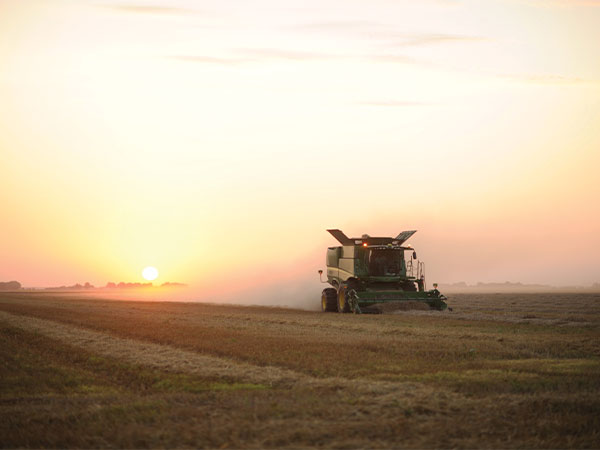

Photo by Megan Sugden
Mike Swanson planted his first rye crop back in the fall of 2012. By spring, the field was already green, and he started to notice pickup trucks slowing down as they passed. Swanson’s farm is in Hallock, Minnesota, 150 miles north of Fargo and 20 miles south of the Canadian border. The rubberneckers turned out to be other farmers, old timers who hadn’t seen rye grown in the area in more than half a century.
Swanson is among a new crop of craft distillers making rye whiskey from locally grown grain—in fact, he grows his own. These small distillers and farmer-distillers are part of the larger story of rye’s resurgence, which includes Canadian whisky’s revival and big bourbon brands releasing new rye expressions. According to the Distilled Spirits Council, rye production is up 1,275 percent since 2009. But small producers like Swanson are a special breed, guided by provenance and agricultural acumen. They focus on heritage whiskey styles and select rye varieties in an effort to create a spirit with a sense of place.
Far North Spirits, which Swanson started on his family farm in 2013, makes rye from several varieties. His great-grandfather, who immigrated from Sweden, bought the now 1,200-acre farm in the early 1930s to grow wheat and barley. Swanson’s grandfather farmed flax, which was used in textiles and cigarette papers. His father grew sunflowers, sugar beets, canola and soybeans. Swanson envisioned making something from what they grew on the farm. He settled on growing rye to distill his own whiskey, an agricultural model that predated the founding of the country.
“I guess you could call it an epiphany,” Swanson says. “Like, wait a minute, I know what you make out of grain. This was the original value-added ag business.”
Rye, a wild grass native to the Euphrates River valley and domesticated some 10,000 years ago, came to the United States along with German, Dutch and Polish immigrants settling in New York, Pennsylvania and Maryland. Many were farmers, who either had a still or had a neighbor with a still. By the early 19th century, thousands of farmer-distillers were scattered across the country. In the Northeast, they made rye whiskey. Pennsylvania alone, which popularized a rye style named for the Monongahela River valley, produced three times as much whiskey—mostly rye—in 1810 as there was bourbon made that year.
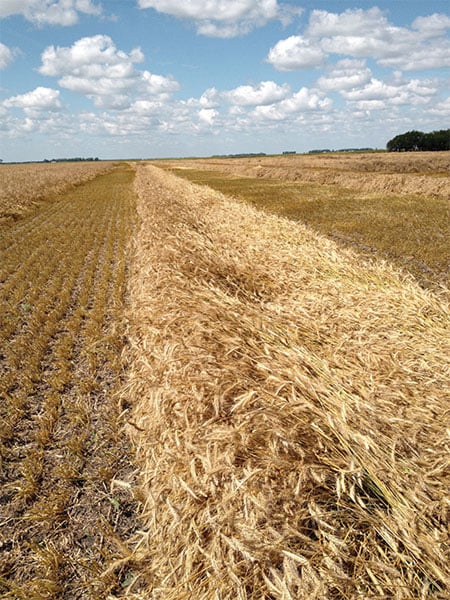

Photo by Megan Sugden
Prohibition ended most whiskey production in the U.S. After it was repealed, the government introduced farm subsidies, incentivizing the production of corn whiskey, but not rye. The large operations of Kentucky and Tennessee flourished, but distilling wouldn’t return to many parts of the country until the 21st century. Rye disappeared not just from whiskey production; wheat won out as the preferred grain for baking. And generations of farmers who had used rye in crop rotations and as a cover crop to enhance soil health abandoned those practices as industrial agriculture replaced family farms. The demand for rye dried up.
No one in the Swanson family had ever grown rye. Hardy and able to thrive in just about any type of soil, rye, it turned out, grew well on Swanson’s land. “Flat as a tabletop,” as he describes it, the land was once underwater, when the prehistoric Lake Agassiz extended from North Dakota to Minnesota and up into Manitoba and Saskatchewan. It deposited thousands of years of sediment, leaving the soil jet black.
For his rye whiskey, Swanson chose Hazlet, a Canadian-bred variety that could stand up to northern Minnesota’s harsh winters. He loved its lush vanilla character and subdued spice, instead of rye’s characteristic sharp black pepper. But he wondered how other varieties might differ. In 2015, Swanson and a researcher from the University of Minnesota secured a grant to study which rye varieties grow and, ultimately, taste best in the state.
For the study, they planted 15 strains, distilled them using identical methods, then gathered tasting data. The results, released in March, showed that varieties bred for climates like Minnesota’s also made the best tasting distillates there.
“I was prepared for the null hypothesis, as in, we can’t find any statistically significant differences in flavor between these varieties. Rye is rye. And that would be a result,” says Swanson. “But there’s actually a pretty dramatic difference.”
Swanson was curious how the distillates from the study might age. He controlled for wood variations by using barrels made the same day at the same Minnesota cooperage. It wasn’t part of the study, but the results of his experiment were surprising—and puzzling. A few of the older varieties that had been troublesome in the field and didn’t taste great unaged were delicious out of the barrel. Musketeer, an open-pollinated variety from Canada released in 1981, produces a delicate, clean whiskey that evokes summer hay, chamomile and celery. Whiskey made from Oklon, bred at Oklahoma State in 1993, is perfumed and a little smoky. Swanson released them as part of the Seed Vault Series and plans to grow a rare variety for a limited-edition run each year.
“There’s more research to be done,” he says, unwilling to guess why the whiskeys aged as they did. “But, you know, what is a research study without a call for more research?”
‘Distilling is a concentration step,” says Aaron MacLeod, the director of Hartwick College’s Center for Craft Food & Beverage, in Oneonta, New York. “You leave all the water behind, all the proteins and sugars, and you get this alcohol—and these flavor essences.” MacLeod believes distillation can provide “the pure essence of the provenance in a bottle.”
An affable Canadian prone to playful analogies when explaining biochemical processes, MacLeod relocated in 2015 to the Catskills from Winnipeg, where he was a chemist for the Canadian Grain Commission. He established the center at Hartwick to provide low-cost technical support, research and quality testing for the farm-brewing value chain, which includes farmers, malthouses, breweries and distilleries. Originally designed to serve local producers—craft beer was blowing up in New York—the center now has some 600 clients in 30 states.
MacLeod regularly fields calls from small distillers seeking advice on selecting a rye variety for their whiskey. Many are turning to local farmers who have never grown rye. Or, if they have, it was for feed or cover-crop seed—generally, not variety-specific. Growing rye for whiskey production requires a more intentional approach. A distiller might choose a variety with lower yields if it produces interesting flavors. Where the grain will grow is another consideration. A rye variety may yield varying results from one site to the next.
“I like to think in terms of what I call functional terroir,” says MacLeod. “The weather, what’s going on in the soil, how much you fertilize or irrigate or don’t… it changes the chemistry of the grain. Because this whole thing is chemistry. The microbiology of the yeast definitely affects the flavor.”
Many of the flavor-promoting compounds in whiskey come about during fermentation. Rye whiskey’s typical spiciness, for example, can be attributed to the compound 4-vinyl guaiacol (4VG), said to smell like cloves. It results from yeast metabolizing ferulic acid, which rye kernels have in abundance. To test the relationship between genetics, environment and taste, MacLeod sourced rye from five different states. The same varieties grown in different environments were mashed, fermented and distilled in the lab. The variety that produced the most 4VG from one state didn’t necessarily produce the same results in another. Stressors like drought or poor soil yielded thinner kernels with more concentrated flavor-promoting phenolic acids, including ferulic acid.
“Environment matters,” MacLeod says.
Craft distillers are learning these dynamics in real time. Alan Laws started making whiskey in Denver about a decade ago. At Laws Whiskey House, he sources his rye from a 90-year-old farm some 250 miles south, in the San Luis Valley, using a semi-wild variety named SLV for the area. It’s beer country, where Coors once sourced much of its malting barley and craft breweries now reign. The farm contracted to big breweries until it became the first independent malthouse in Colorado.
“For us, it’s always been about highlighting the grain flavors,” says Laws. “Flavor stems from things that aren’t bred and rebred and bred again to get yield. It takes you back to heirloom pretty quickly.”
Made with 100 percent rye, half of it malted, his San Luis Valley Straight Rye comes across as caramelized at first. Then, the salinity kicks in: salt caramel. It has spice, as rye should, but the pepper is more vegetal, like serrano. Laws attributes the flavors to the grain and its place. A tight clay soil high in calcium stresses the rye. The elevation—7,500 feet above sea level—provides dramatic temperature swings from day to night, allowing it to ripen gradually.
“We’re not grain to glass. We’re, like, dirt to glass,” he says.
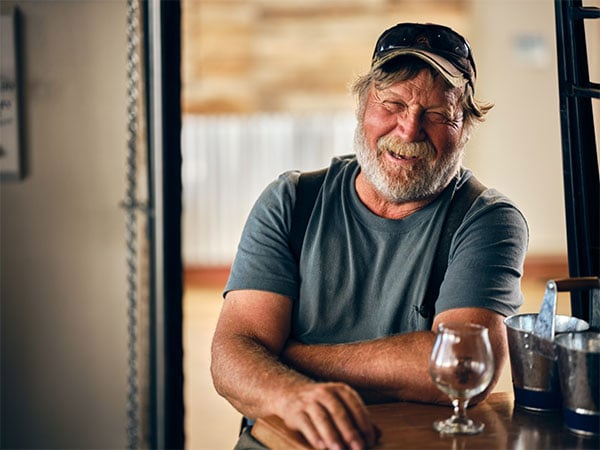

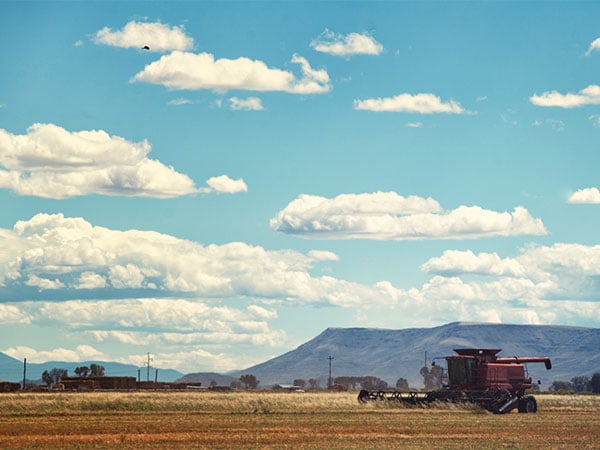

The Northeast was once the country’s breadbasket. Wheat, barley and rye fields stretched across New York State. The 75-acre organic farm in the Hudson Valley where Coppersea whiskey is made recalls those days. Set back from Wallkill River, on rich bottomland soil, it looks out onto Bonticou Crag, part of the Shawangunk Ridge. A weeping willow sways over the pewter-gray barn and silo. Distiller Christopher Williams grows some and malts all of the rye that goes into the whiskey.
“The grain plays a part, the malting plays a part, the method of production plays a part,” says Williams. “Provenance is not just the source of the grain.”
Coppersea is wholly committed to making a local product using heritage methods. The whiskey is made with locally farmed grains, spontaneously fermented in open vats and distilled in simple direct-fired pot stills. Williams taught himself to malt his own rye when there were no local maltsters in the state. Malting produces the enzyme alpha-amylase that helps convert starches to fermentable sugars. Synthetic enzymes can be used, but Williams believes these would not only influence the whiskey’s flavor, but make it a less authentically Hudson Valley product.
In 2015, Williams and five other New York distillers set out to establish a new rye designation for the state. It would pay homage to the region’s tradition of rye whiskey without presuming to recreate what’s been lost to history. They settled on the name Empire Rye and came up with a set of standards. To qualify, a rye must be mashed, fermented, distilled and aged at a single facility. It must also meet New York’s Farm Distilling Act criteria, which call for 75 percent of ingredients used—in this case, rye—to be grown in New York. The national standard for rye whiskey is 51 percent rye grain, sourced from anywhere.
“It felt like I had never really tasted rye until I tried Empire Rye,” says Kings County Distillery co-founder Colin Spoelman, who makes his Empire Rye out of Brooklyn. “All I’d ever had were these commercially distilled products that tend to have a high corn content.”
Spoelman finds that his rye softens over time in barrel, but he prefers it young. At two years, the rye, blended with 20 percent malt barley, is grassy, with hints of bergamot and baking spice. Coppersea makes several rye expressions. Its Bonticou Crag Straight Rye Malt is fruity and spiced, with a breath of fresh herbs at the end. Both distilleries use Danko, the de facto variety for Empire Rye. Bred in Poland in the 1970s, it has no known historical connection to New York; experts can’t say what variety, if any, was once preferred in the state. Danko has been found to grow well in New York—and it produces good whiskey.
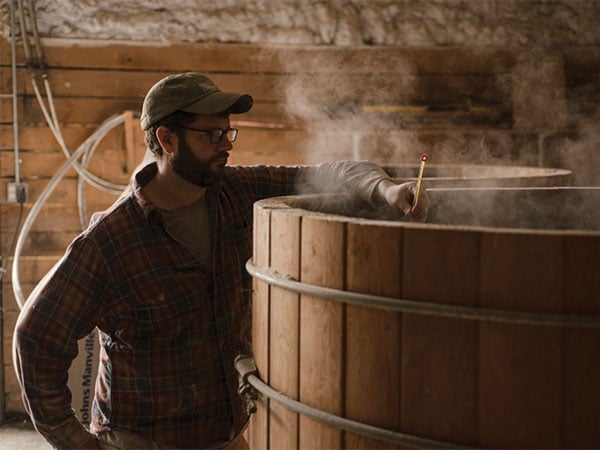

Photo by Meghan Spiro
“When it comes to provenance, you don’t want the tail to wag the dog,” says Williams. He and his fellow Empire Rye producers are less interested in recreating the past—including claiming some heritage variety with a tenuous connection to the region—than forging a meaningful future for rye whiskey in New York.
Perhaps the most famous—or, once-famous—rye in America was the Monongahela style, from western Pennsylvania. Blended with malted barley, the style is being revived by a handful of distillers.
“Pennsylvania was the historic home of American whiskey and rye whiskey, in particular,” says Herman Mihalich of Dad’s Hat Rye.
Growing up, Mihalich could see the Monongahela River from his bedroom window. His father ran a tavern that served local rye, and Mihalich now makes his own to capture that flavor. His Pennsylvania Straight Rye has an oatcake sweetness and a whiff of barnyard. Mihalich’s research into Pennsylvania’s distilling history led him to Rosen rye, a Russian variety introduced to the U.S. in 1909. No one farmed it anymore, so Mihalich turned to the federal seed bank. What started as five grams of seed has, in a few years, grown into acres. Mihalich hopes to make his first Rosen rye whiskey next year.
“Perhaps Rosen rye will turn out to be interesting,” he says. “But, more importantly, I’d like to see Pennsylvania farmers become integral to the supply of rye grain for the whiskey industry. As rye whiskey grows, the demand for the grain will grow, too, regardless of which variety it is.”
Whiskey producers can be wary of using the word terroir—even if they believe their product expresses something essential about place. Because whiskey making involves so much manipulation, so many biochemical transformations, its expression of provenance relies heavily on a factor that proponents of terroir prefer to avoid: human culture. Reviving old rye varieties and styles is more than just a neat trick. It’s an exercise in connecting different human endeavors. American rye is as diverse as there are varieties, soil types and microclimates, but also farmers and distillers, malthouses and local cooperages. Bringing back rye at the local level feeds them all.
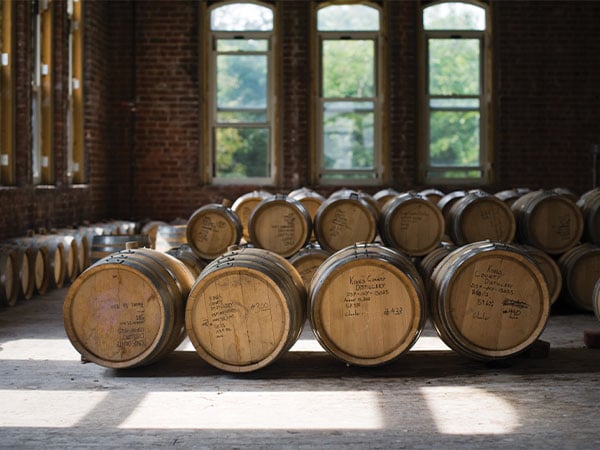

Photo by Valery Rizzo
Local Ryes
Minnesota:
Far North Spirits Røknar Seed Vault Series
(47% ABV; $45/750 ml)
Colorado:
Laws Whiskey House San Luis Valley Straight Rye
(47.5% ABV; $54/750 ml)
New York:
Coppersea Bonticou Crag Straight Rye Malt
(48% ABV; $75/750 ml)
New York:
Kings County Distillery Empire Rye
(51% ABV; $99/750 ml)
Pennsylvania:
Dad’s Hat Pennsylvania Straight Rye
(47.5% ABV; $55/750 ml)
Michigan:
Two James Catcher’s Rye
(49.4% ABV; $50/750 ml)
Chantal Martineau is the author of How the Gringos Stole Tequila and co-author of Finding Mezcal. She lives in New York's Hudson Valley.
This story appears in the print issue of April 2021.
Like what you read? Subscribe today.
















